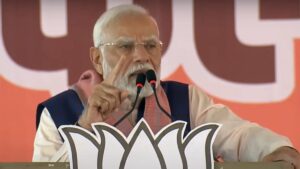Census Data To Be Published In 2026, Delimitation To Follow: Govt Sources

Last Updated:
Despite some political parties calling for caste census, News18 has learnt that at this moment, the government has no plans to allow the same
According to the 2011 data, India’s population stands at 121.1 crore of which 52 per cent are males and 48 per cent are females. (Getty)
The last time census was recorded in India was 2011. The next round was to begin in 2021, but the second wave of Covid-19 delayed it. Since then, several questions have been asked about when the data of the next census will be published. Now, highly placed sources in the Union government have confirmed to CNN-News18 that the next census data would be available in 2026. “The process of recording data will begin in 2025, and the report will be published in 2026,” a top source said.
The first cycle of census will now be from 2025 to 2035 and then 2035 to 2045 and so on.
The government is well on course to prepare for recording the census. Despite some political parties calling for caste census, News18 has learnt that at this moment, the government has no plans to allow caste census. In fact, in the existing form, where every person undertaking the survey publishes their name, details, family details etc, they have the option of filing details of religion. There is another column that identifies them as either Scheduled Tribe or Scheduled Caste (SC/ST). The only addition to the form will be to allow people undertaking the survey to mention their sect under their religion.
The Congress, RJD and several other parties have been demanding that a caste census be undertaken. BJP’s alliance partners such as JDU in Bihar have also spoken about the same, but have not put any pressure on the Centre. At the central level, the final decision has been left to Prime Minister Narendra Modi and his cabinet. BJP’s other ally, Telugu Desam Party, too is of the opinion that the census must happen, with Andhra Pradesh Chief Minister Chandrababu Naidu actively advocating for ‘skill census’ for the benefit of the masses, especially the young population.
The RSS too is in favour of caste census so long as it’s not being done for gaining political mileage by any party.
Meanwhile, sources also said that when the publishing of the census data take place, the government will begin the process of delimitation. This will give the country more elected representatives in the coming years. Only after the process of delimitation is complete can the likes of women’s reservation of 33 per cent be implemented.
Many states in the South, especially Tamil Nadu, have followed a strict population policy and therefore, the government is also considering a proposal to see that no unfair treatment is meted out to them via the delimitation process.
The census of India is recorded every decade, with the first one being held in 1872. The first census post-Independence was recorded in 1951 and the last one in 2011.
The census data is extremely important for the government of India for its policy formulation and implementation, and ensuring equal distribution of resources in the country. The census throws light on multiple aspects, including population, demography, economic status etc.
In the absence of census due to the coronavirus pandemic, the government of India is currently still relying on the census data of 2011.
According to the 2011 data, India’s population stands at 121.1 crore of which 52 per cent are males and 48 per cent are females. It was during this census that the transgender numbers were taken into account for the first time in India’s history. As per data, Uttar Pradesh is the most populous state with nearly 20 crore people and at number two on the list is Maharashtra with more than 11 crore people. At nearly six lakh, Sikkim had the lowest population.
In the 2011 data, the literacy percentage in India stood at 74 per cent. The literacy in males was 82 per cent whereas female literacy numbers were at 65%.
The religious demographics of the country in the 2011 census showed Hindus at 79.8 per cent, Muslims at 14.23 per cent, Christians at 2.30 per cent and Sikhs at 1.72 per cent of India’s population. About 57,000 Parsis are also part of India’s population. During the survey, it was recorded that 0.24 per cent respondents registered themselves as having “no religion” — a category that was introduced for the first time in 2011.



